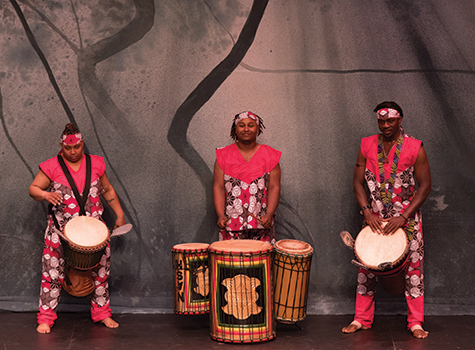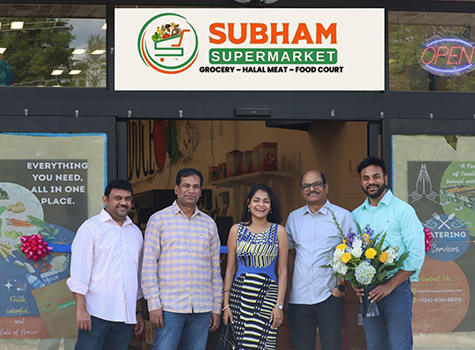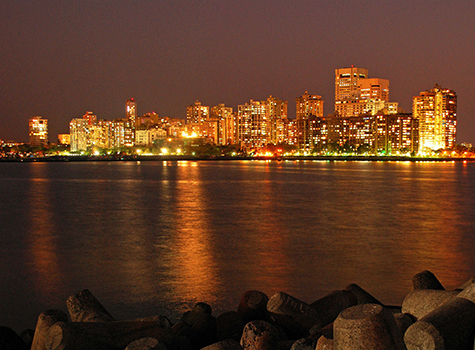
India is a land of ancient culture and traditions, in which dance, music, art, literature, architecture and handicrafts play a very important role.
In music and dance, drums have always played an essential role. In any dance form, from any country, when you add drums to the orchestra, it sets the stage for presentation of energy. They are used to invoke spirits, create rhythmic patterns or describe the intensity of cosmic dances. As you hear the drumbeats, your heart races according to the rhythm and your feet start moving. No matter what age, this feeling is unique to all living beings including animals.
In Hinduism, I think it all started with the dances with Dhamaru drum performed by Lord Shiva. A small drum shaped like an hourglass is known as a Dhamaru. This is one of the attributes of Lord Shiva in His famous dancing representation, known as Nataraj, the King of Dances. A specific hand gesture called Dhamaru-hasta is used to hold the drum while dancing. The Dhamaru in His left hand represents the Shabda or cosmic sounds. According to scriptures, it represents “OM†from which all languages are formed.
In ancient Hindu sculpture, painting, and mythology, the Mridangam, a South Indian Drum, is often depicted as the instrument of choice for a number of deities to play and to dance with, including Ganesha (the remover of obstacles) and Nandi, who is the vehicle of Lord Shiva. Nandi is said to have played the Mridangam during Shiva’s ancient Tandava dance, causing a divine rhythm to resound across the heavens.
The Pung cholom is a Manipuri dance, also known as Mrindanga Kirtan or Dhumal dance. This dance is performed by only males either as integral part of Nata Sankirtan or independently in front of a social gatherings. In this style, dressed in white, dancers need to be graceful and acrobatic at the same time. They use these acrobatic effects without breaking the rhythm or flow of music created with drums. The dance is marked by a gentle rhythm, which gradually builds up to a thunderous climax.
It is a heart pounding experience to watch these dances. Pung cholom borrows many elements from the Manipuri martial arts.
When it is a part of Nata, two players participate in its performance, but as an independent dance performance at least 14 players follow the sequence of Nata Sankirtan. In this series more than 40 complicated talas/rhythms representing particular compositions are presented. The number of drummers may increase at times up to 100. The performance is full of various types of body movements that are executed with great artistic skills and excitement.
Then there is a professional Drum-Dance from Jalore. Five men with huge drums around their necks, some with huge cymbals, accompany a dancer who holds a sword in his mouth and performs vigorously by twirling three painted sticks. By no means are these drums small in size. Let alone playing and holding them around the neck, I can’t imagine dancing with them. I think the sound and the rhythm of the drums give them energy.
Another fine example of drum dance is the festive dance of Ghumra, mostly prevalent in Orissa, especially in the districts of Sambalpur, Balangir and Kalahandi. The name of the dance is derived from the pitcher that looks like a drum. Its body is made from terracotta (mud). The neck of the drum is like a hollow cylinder. On its mouth they tie the skin of Godhi, a lizard like reptile. The drum is slung from the neck of the dancers like in Pung Cholam, but they also tie it to the back so that the face of the drum is close to their chest.
The dancers play on the face of the drum with both their hands while dancing. This dance is also performed only by men.
Then there is Dhol drum which refers to any one of a number of similar types of double-headed drum widely used, with regional variations, throughout the Indian subcontinent.
The dhol’s range stretches westward as far as eastern Afghanistan. The Punjabi dhol is perhaps best known here in the USA due to its prominent place in the rhythm of popular Punjabi bhangra music and dance. A Bhangra dance is not complete without live Dhol music and sometimes, the dancers sing and dance while playing the drums. This energy booster and spirit lifter drum is a must in any celebration.
Many countries in Africa, China, Korea, and others have drum dances as well. Even Native Americans use the drums to call upon the spirits of nature. However, in my opinion, perhaps no country can surpass India in the range and variety of drums and drumbeats, making it an essential part of dancing, like your heartbeat.
For questions or comments, contact Dr. Maha Gingrich via email at [email protected].



